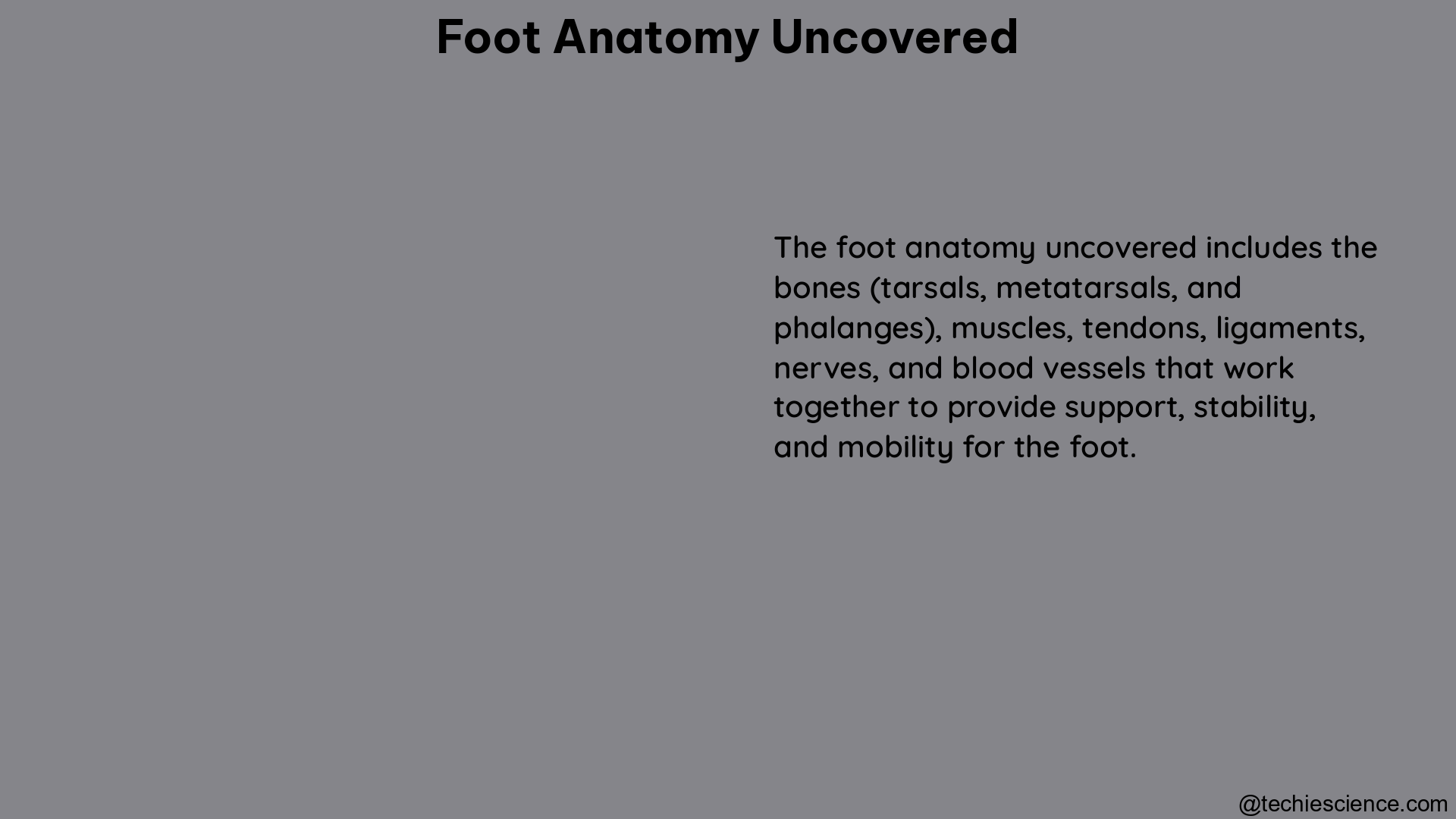The human foot is a remarkable and complex structure, comprising 26 bones, 33 joints, and over 100 muscles, tendons, and ligaments. This intricate system works in harmony to provide support, stability, and mobility, allowing us to navigate our world with ease. In this comprehensive guide, we will delve into the intricacies of foot anatomy, uncovering the hidden wonders that make this remarkable structure a true marvel of human engineering.
The Tripartite Structure of the Foot
The human foot can be divided into three distinct regions: the hindfoot, the midfoot, and the forefoot. Each of these regions plays a crucial role in the overall function of the foot.
The Hindfoot
The hindfoot is composed of two primary bones: the talus and the calcaneus. The talus, also known as the ankle bone, forms the upper part of the ankle joint, articulating with the tibia and fibula to facilitate the pivotal movements of the ankle. The calcaneus, or heel bone, is the largest and strongest bone in the foot, providing a stable foundation for the entire structure.
The Midfoot
The midfoot contains a collection of smaller bones, including the navicular, cuboid, and three cuneiform bones. These bones work together to form the longitudinal and transverse arches of the foot, which are essential for distributing weight and absorbing shock during movement.
The Forefoot
The forefoot is made up of the five metatarsal bones and the phalanges of the toes. The metatarsals connect the midfoot to the toes, while the phalanges, the bones of the toes, provide the final link in the kinetic chain of the foot.
The Longitudinal Arch: A Unique Characteristic

One of the most distinctive features of the human foot is the longitudinal arch (LA), which is maintained partly by the plantar aponeurosis, a broad sheet of fibrous connective tissue that spans the plantar surface of the foot. This LA functions like a spring, storing and releasing elastic energy in the ligaments, contributing to the overall passive stiffness of the foot.
The Role of Intrinsic and Extrinsic Foot Muscles
The intrinsic and extrinsic foot muscles in humans may be capable of adjusting the passive stiffness of the LA. Most of these muscles insert onto the toes, but their bellies and/or tendons cross multiple joints comprising the LA, potentially making them capable of resisting bending moments at these joints.
Foot Strike Angle and Midfoot Kinematics
The foot strike angle is another important aspect of foot anatomy. Previous studies have demonstrated the effects of different foot strike patterns on midfoot kinematics, highlighting the complex interplay between the various structures within the foot.
The Calcaneopedal Unit (CPU): A Unique Anatomical Entity
The calcaneopedal unit (CPU) is a specific anatomical and physiological entity represented by the entire foot, excluding the talus. The calcaneus, midfoot, and forefoot are solidly bound by strong ligaments, creating a unit that articulates with the talus. The movement of the CPU is complex, as it rotates under the talus around the axis constituted by the talo-calcaneal ligament of Farabeuf. Additionally, the CPU is deformable, with the bones that constitute it moving to small degrees in relation to each other to maintain a plantigrade foot in stance.
Quantifiable Data on Foot Anatomy
Researchers have conducted studies to measure and quantify various aspects of foot anatomy. One study found that loading and lifting a 10-kg weight on the knee respectively lowered and raised the foot arch between 1 and 1.5 mm, with less than 50% of this change accounted for by plantar surface skin compression. Another study measured the arch height index (AHI) of the participant’s right foot during standing using a custom-machined device. AHI is calculated as medial midfoot dorsum height divided by medial foot length excluding the hallux, and has been shown to be a robust and repeatable measurement of relative longitudinal arch height.
Conclusion
The human foot is a remarkable and complex structure, with a wealth of intricate details that continue to fascinate researchers and clinicians alike. By understanding the tripartite structure of the foot, the unique characteristics of the longitudinal arch, the role of the calcaneopedal unit, and the quantifiable data available, we can gain a deeper appreciation for the engineering marvel that is the human foot. This comprehensive guide has provided a detailed exploration of foot anatomy, equipping you with the knowledge to better understand and appreciate the remarkable capabilities of this essential part of the human body.
References

The lambdageeks.com Core SME Team is a group of experienced subject matter experts from diverse scientific and technical fields including Physics, Chemistry, Technology,Electronics & Electrical Engineering, Automotive, Mechanical Engineering. Our team collaborates to create high-quality, well-researched articles on a wide range of science and technology topics for the lambdageeks.com website.
All Our Senior SME are having more than 7 Years of experience in the respective fields . They are either Working Industry Professionals or assocaited With different Universities. Refer Our Authors Page to get to know About our Core SMEs.